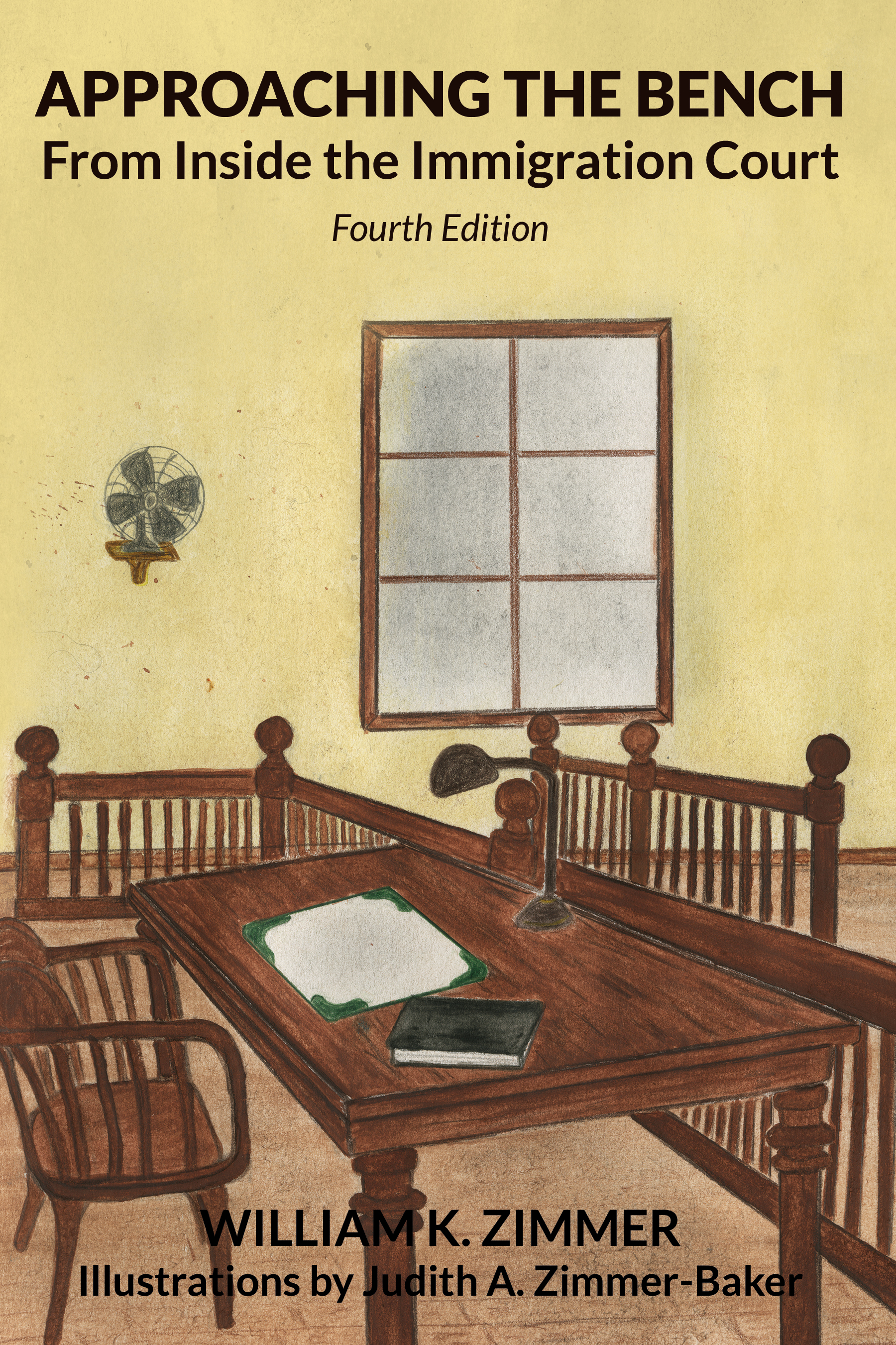Targeting of Family Members Not Persecution

The procedural history, facts of record, holding and rationale in Matter of M-R-M-S-, et al., 28 I&N Dec. 757 (BIA 2023) are as follows:
Case History
On March 13, 2018, an Immigration Judge denied the respondents’ applications for asylum and withholding of removal.
The respondent filed a timely appeal to the Board of Immigration Appeals (“BIA”) which is opposed by The Department of Homeland Security (“DHS”).
Facts
- The respondents are natives and citizens of Mexico who filed applications for asylum and withholding of removal under sections 208(b)(1)(A), and 241(b)(3)(A) of the Immigration and Nationality Act, as amended (“the Act”).
- The adult respondents also filed applications for relief under the Convention Against Torture and Other Cruel, Inhuman or Degrading Treatment or Punishment (“CAT”).
- According to the BIA’s fact summary:
- A criminal cartel forced the respondents from their land, as well as other families in the same area because the criminal cartel wanted possession of the land for their own purpose.
- The criminal cartel killed the lead respondent’s grandson for unknown reasons.
- The respondents founded their persecution claim on membership in a particular social group consisting of “members of their family and perceived members of their household in their hometown.”
- The Immigration Judge reasoned that the respondents failed to establish a nexus between the claimed harm and their membership in the proposed particular social group.
- In particular, the Immigration Judge found that the cartel was motivated by a “desire to control the respondents’ land rather than their family membership.”
Held:
Dismissed
Rationale
The respondents did not contest the denial of relief under the CAT, but challenged the denial of their asylum and withholding of removal claims by asserting that the Immigration Judge erred in finding that their membership in the proposed particular social group was not at least one central reason for the harm.
The BIA reasoned as follows:
- To establish eligibility for asylum, an applicant must show that a statutorily protected ground was or will be “at least one central reason” for the claimed harm. See section 208(b)(1)(B)(i) of the Act.
- A persecutor may have more than one reason for harming an applicant. Matter of J-B-N- & S-M-, 24 I&N Dec. 208, at 211–14 (BIA 2007).
- Therefore, if an alleged persecutor was or will be motivated by one or more statutory grounds, the Immigration Judge must determine whether the protected ground was or will be “one central reason” for the harm.
- A protected ground that is “incidental, tangential, superficial, or subordinate to another reason for harm” does not satisfy the central reason standard. Matter of J-B-N- & S-M-, 24 I&N Dec. at 214.
- In Matter of L-E-A-, 27 I&N Dec. 40, at 46 (BIA 2017), reversed in part by 27 I&N Dec. 581 (A.G. 2019), vacated by 28 I&N Dec. 304 (A.G. 2021) the BIA had concluded that a cartel’s desire to sell drugs in a family member’s store was one central reason for its actions and that the applicant’s membership in his family was, at most, incidental.
- Although different interpretations of “one central reason” have arisen among appellate courts, the interpretation of the Tenth Circuit Court of Appeal which has jurisdiction over the venue of the immigration court that had denied the respondents’ persecution claim is persuasive. Compare Orellana-Recinos v. Garland, 993 F.3d 851, at 858 (10th Cir. 2021) (affirming the denial of asylum because it was “reasonable to find that the gang members had no animus against [the] family per se”) with Hernandez-Avalos v. Lynch, 784 F.3d 944, at 949 – 50 (4th Cir. 2015) (reversing denial of an asylum claim after concluding that an applicant’s relationship to her son is why she, and not another person, was targeted with multiple death threats in an attempt to recruit her son).
- The fact that family membership is a reason for harm does not mean that family membership is necessarily one central reason for the harm.
- If a persecutor is targeting members of a certain family as a means of achieving some other ultimate goal unrelated to a protected ground, family membership is incidental or subordinate to that other ultimate goal and, therefore, is not one central reason for the harm. See Sanchez-Castro v. U.S. Att’y Gen., 998 F.3d 1281, at 1287 (11th Cir. 2021) (“Where a gang targets a family only as a means to another end, the gang is not acting because of who the family is; the identity of the family is only incidentally relevant.”).
- In in Matter of L-E-A-, 27 I&N Dec. 40, at 45 (BIA 2017), reversed in part by 27 I&N Dec. 581 (A.G. 2019), vacated by 28 I&N Dec. 304 (A.G. 2021), the BIA had concluded that “the fact that a persecutor targets a family member simply as a means to an end is not, by itself, sufficient to establish a claim.”
- Based on the facts in the record under review, the Immigration Judge plausibly concluded that cartel that threatened the respondent’s and forced them off of their land was motived by a desire to control the respondents’ land (i.e. to obtain the land for its own criminal purposes) rather than harming them based on their shared family membership.
- Therefore, the respondents failed to establish a nexus between the motive of the alleged persecutor and a protected ground enumerated in section 101(a)(42) of the Act (i.e. race, religion, nationality, membership in a particular social group and political opinion).
- Since failure to establish a nexus between the motive of the alleged persecutor and a protected ground is dispositive of the respondent’s persecution claim, it is not necessary to consider any other arguments raised in support of that claim.
Commentary
In Matter of M-R-M-S-, et al., 28 I&N Dec. 757 (BIA 2023), the BIA did not discuss whether a nuclear family could be classified as a particular social group or what standard should apply to such classification. Obviously, the outcome of Matter of M-R-M-S-, et al. is governed by the nexus requirement that a statutorily protected ground was or will be “at least one central reason” for the claimed harm. See sections 101(a)(42) and 208(b)(1)(B)(i) of the Act. It seems apparent that for the sake of discussion of the nexus requirement relating to persecution claims, the BIA tacitly assumed that the respondents’ shared family status qualified as a particular social group.
Matter of L-E-A- is one of the published BIA decisions that was caught up in the whirlwind of reversals and vacations by United States Attorney Generals appointed during two different, sequential political administrations; the administration of President Donald Trump and the administration of President Joe Biden.
In Matter of L-E-A-, Attorney General William Barr had applied the requirement of social distinction to hold that most nuclear families are not particular social groups because “most nuclear families are not inherently socially distinct.” Matter of L-E-A-, 27 I&N Dec. 581, at 589 (A.G. 2019).
Then Attorney General Merrick B. Garland, on June 16, 2021, vacated previous attorney general decisions in Matter of A-B-, 27 I&N Dec. 316 (A.G. 2018) (now known as “A-B- I”) and Matter of A-B-, 28 I&N Dec. 199 (A.G. 2021) (now known as “A-B- II”) and the attorney general decision in Matter of L-E-A-, 27 I&N Dec. 581 (A.G. 2019) (now known as “L-E-A- II”). See Matter of A-B-, 28 I&N Dec. 307 (A.G. 2021) and Matter of L-E-A- 28 I&N Dec. 304 (A.G. 2021).
According to Attorney General Garland:
The President recently issued an executive order directing the Attorney General and the Secretary of Homeland Security to promulgate regulations “addressing the circumstances in which a person should be considered a member of a ‘particular social group.’” Exec. Order No. 14010, § 4(c)(ii), 86 Fed. Reg. 8267, 8271 (Feb. 2, 2021).
See Matter of A-B-, 28 I&N Dec. 307, at 308 (A.G. 2021) and Matter of L-E-A- 28 I&N Dec. 304, at 304, 305 (A.G. 2021).
Some readers might recall that the same approach was taken by the late Attorney General Janet Reno during the Clinton administration regarding Matter of R-A-, 22 I&N Dec. 906 (BIA 1999, A.G. 2001). Unfortunately, clarifying regulations regarding the particular social group at issue in Matter of R-A-, have not yet been promulgated.
Although the somewhat unusual flurry of attorney general decisions in the recent history of administrative asylum adjudications might excite some people interested in asylum law application or others based on political orientation, reflection on diverging interpretations of nexus and the phrase, “one central reason,” in section 208(b)(1)(B)(i) of the Act might be more relevant to understanding Matter of M-R-M-S-, et al..
It seems that issues relating to the required nexus between the motive of an alleged persecutor and a protected ground that will justify an asylum claim often raise the specter of the United States Supreme Court decision in INS v. Zacarias, 570 U.S. 478 (1992).
Consider hypothetically a guerrilla organization that attempts to forcibly recruit a person by threatening or harming that person’s relatives. According to the United States Supreme Court, forcible recruitment of a person for the purpose increasing ranks of fighters to carry out a war with the government is not persecution. INS v. Zacarias, 570 U.S. 478 (1992).
Presuming the forcible recruitment target’s nuclear family can qualify as a particular social group, the threatened or harmed relatives of the recruitment target in the jurisdiction of the Fourth Circuit Court of Appeal might successfully establish a persecution claim by asserting that “but for” family membership the relatives would not have been threatened or harmed. In other words, according the Fourth Circuit Court of Appeal family membership is the reason why the relatives of the recruitment target were threatened or harmed, instead of other persons, regardless of the alleged persecutor’s primary motive to forcibly recruit the targeted individual for purposes unrelated to family membership.
The BIA would say that, even if the relative in this hypothetical example is a member of a particular social group, the central motive of the alleged persecutor is forcible recruitment, and family membership is tangential or incidental to the forcible recruitment motive.
Moreover, the BIA would hold that since the alleged persecutor threatened or harmed the relatives of a recruitment target for the central reason of forcible recruitment in pursuit of their war with the government, not on account of the protected ground of family membership (which is at best tangential or incidental to the forcible recruitment motive), a decision maker can only deny the asylum claim.
The broader standard articulated in the Fourth Circuit Court of Appeal simply asks “why [the applicant], and not another person, was threatened” or harmed. Alvarez Lagos v. Barr, 927 F.3d 236, at 250 (4th Cir. 2019). See also Hernandez-Avalos v. Lynch, 784 F.3d 944, at 949 – 50 (4th Cir. 2015) (reversing denial of an asylum claim after concluding that an applicant’s relationship to her son is why she, and not another person, was targeted with multiple death threats in an attempt to recruit her son).
An odd or possibly absurd consequence of the Fourth Circuit’s approach to establishing nexus is apparently not mentioned by the BIA in Matter of M-R-M-S-, et al..
If the person who is the target of the forcible recruitment or forcible dispossession of land filed an asylum application, the forcible recruitment motive of the alleged persecutor or the alleged persecutor’s land interest would not qualify the targeted person for asylum, even if the targeted person was or will be actually threatened and harmed.
As established in INS v. Zacarias, the persecutor’s forcible recruitment motive does not align with a protected ground (i.e. race, religion, nationality, membership in a particular social group, or political opinion). Likewise, the BIA’s rationale in Matter of M-R-M-S-, et al. seems to compel the same conclusion that a persecutor’s motive to take possession of land, without more, does not align with a protected ground.
Nevertheless, application of the Fourth Circuit standard (i.e. simply ask why the asylum applicant, and not another person, was threatened or harmed) allows any threatened or harmed relative of the recruitment target or a land dispossession target to legally qualify for asylum.
In other words, every family member, except the person targeted for recruitment or land dispossession, would have a pathway to asylum. This seems, at a minimum, to be an odd result. In this circumstance, it appears that the DHS could forcibly argue that such a result is absurd.
At least one conclusion appears to be clear. The challenge of establishing a nexus between the motivation of the alleged persecutor and the alleged particular social group of the asylum applicant remains and will not go away in the shadow of INS v. Zacarias and Matter of M-R-M-S-, et al., even if the asylum applicant can prove membership in a cognizable particular social group.
